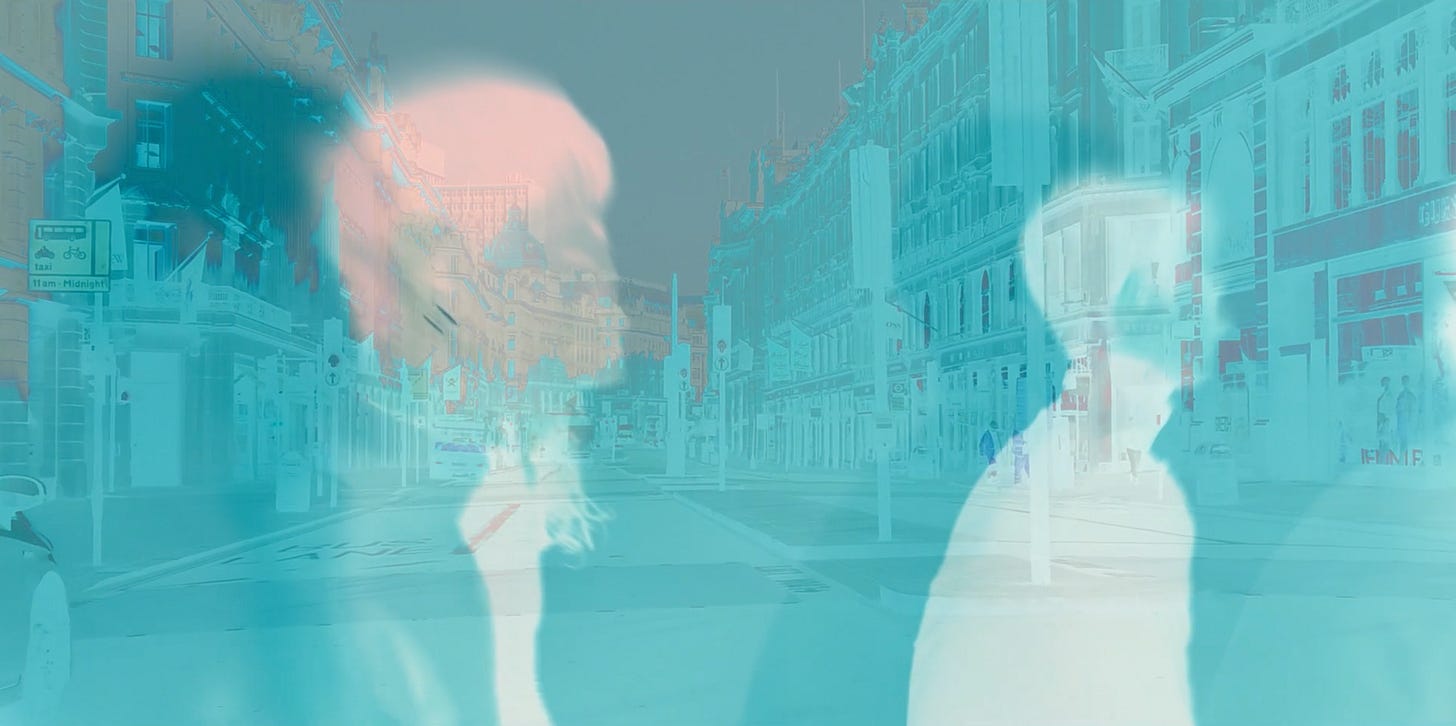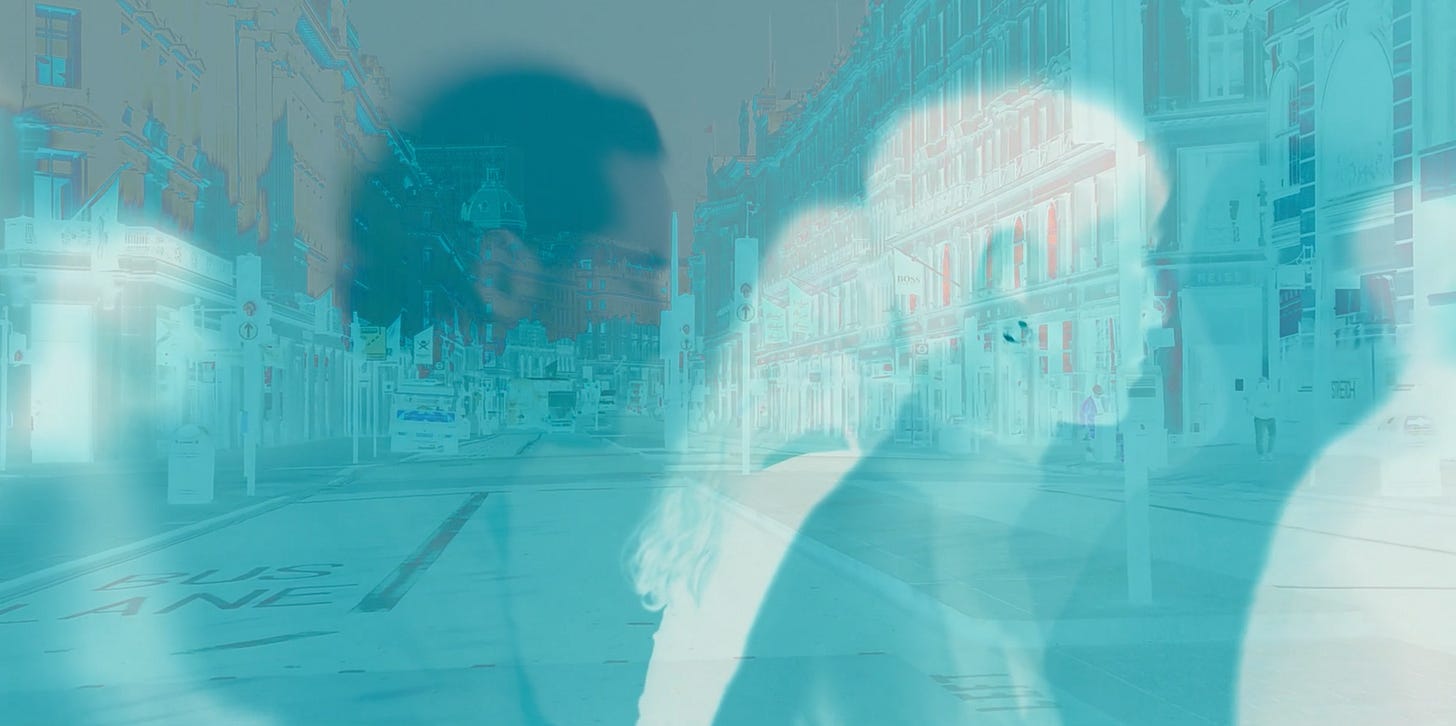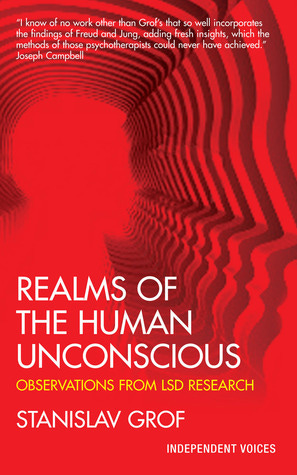Music is a (More-Specific) Amplifier of Consciousness
Like a loose scaffolding, music offers boundaries and suggestions that confine and focus the experience.
This article is a continuation of the series introducing distinct therapeutic functions of music and What Makes Music Therapeutic?
If you’ve found this discussion valuable, please consider supporting my work by subscribing, liking these posts, and sharing them with anyone who might benefit. Thank you!
Prelude
Before we dive deeper into the realm of ideas, l like to start this part with a short experiential illustration
I invite you to take a moment to play the audio sample below.
As long as you wish, close your eyes as you listen, and ideally do so with headphones (I recorded these sounds using in-ear binaural technique, creating a more immersive, 3D sound experience).
Then patiently observe what unfolds within the bubble of your own consciousness:
No matter how vivid or how vaguely contoured, you are most likely to have noticed emerging sensory associations, mental images, or even personal memories. And for these to have evolved dynamically, synchronised with the dynamics within the soundscape.
Despite this being pure audio, your mind wove a multi-sensory narrative as it progressed. This spontaneous creative process reveals a fundamental property of our brain. And it illustrates one of the core ideas that I will focus on in greater detail in this part of this series: The capacity of music to amplify consciousness.
An Intermediate Summary
I’ve so far introduced a number of conceptual building blocks to explore the question What Makes Music Therapeutic?
Since the ideas that follow continue to build and expand upon these, I’ll begin this part with a brief recap of key terms, each with a short definition and hyperlinks to more detailed context in previous articles of mine.
First of all, we discussed how mental health is essentially referring to the functioning of the Self. The self in turn, is not a fixed, solid structure, but a collection of learned processes that dynamically mediates the interfacing, the relating between “me”, “other” and “the world”
This dynamic emergence of the self can be understood through the framework of enactment and re-enactment: the engagement of implicit memory systems (experience-based learnings), activated by the present context, and actively re-experienced within it.
The Musical Self refers to the internalised processes from formative life experiences, that are largely musical in nature, highly salient, and hence became foundational to the functioning of the self.
Importantly, the musical self is shaped not necessarily by music, but by musical qualities: the distinct acoustic properties that sound can have, such as rhythm, pitch, timbre and their temporal-dynamic contours.
Music is the intentional organisation of such musical qualities. It capitalises upon sense-making mechanisms that are evolutionarily ancient, ontologically innate, and implicitly acquired.
Music is so effective in conveying, creating and changing subjective experiences, because its logic so closely resembles the logic of our consciousness.
I then introduced the idea of Musical Enactment to refer to the process of self-enactment that occurs when the Musical Self is engaged by musical qualities in the present moment.
Musical enactment is able to engage the entire sensory and cognitive palette of the listener. And understanding this point as we progress, is important to help us better grasp music’s therapeutic potential, and the 3 distinct types of musical enactment that I will introduce subsequently.
In the next sections, I will therefore unpack and demystify the multi-sensory property of music listening in more detail.
Musical Enactment is Multi-Sensory
The subjective experience of music moves across the full spectrum of consciousness. It is coherent and continuous.
But why is this? How can it be that despite music itself being fundamentally auditory in nature, that the actual subjective experience of music can include all the senses and such a unified way?
We can find answers to this by looking at how the brain integrates multi-sensory data to create an integrated and continuous subjective experience. Particularly relevant to this discussion are theories on multi-sensory integration and cross-modal music perception.
These fields of research show that schemas (implicit information-processing pathways) operate like a-modal “building blocks” for perception.
Although a schema may initially be encoded in one domain (for example only sound), they are shown to reliably activate implicit memory encoded in other domains (for example vision).
Studies documented such cross-modal perception mechanisms extensively for audio-to-visual perception, but also in domains of taste and smell (insights happily leveraged by some restaurants), and for music-evoked emotion.
The brain works predictively. And in order to be most accurate and efficient in this sense-making effort, it also works highly associatively, or we might even say, collaboratively: The entire operatus of being of the listener becomes involved
For example, when we hear someones voice the musical qualities of that voice are simultaneously activating schemas that tell us who the person most likely is. As well as how they likely look like.
When we simultaneously watch the person speak to us, not only do we then use the direct auditory input, but also the visual and bodily cues to detect or guess the emotional meaning in this communication.
There are many more examples to give of this well-studied principle. Such multi-sensory integration mechanisms are foundational for the brain to function well. And it forms an inherent part of musical enactment. Explaining both it’s multi-sensory richness, and it’s seductive realism.
Musical Enactment is Immersive
We do not consciously decide what to feel and think in response to hearing music, but act more as if we are experiencing a vivid dream.
Some readers may mistakenly interpret that musical enactment involves a conscious recall of melodies, timbre or rhythms. In reality, these cross-modal processes of sense-making operate mostly, entirely beneath the surface of awareness.
To clarify this point with an analogy, let’s imagine you are watching a film projected on a large white wall in front of you by a projector: What you consciously experience is the seamless integrated visual stream in front of you.
But the countless mechanisms that underlie this experience remain hidden within the inner workings of the projector.
Crucially, and to add some important nuance: within musical enactment there is much less of such clearly a separation between the one-who-watches and what-is-watched.
In musical enactment, the listener does not watch a movie on a screen, but becomes the movie itself.
Here, the projector symbolises the listener’s musical self, and the screen symbolises the rich experience that unfolds, embodied by the listener.
Music evokes a world that is experienced in a multi-sensory manner, with waves of bodily sensations, emotions and personal associations emerging in synchrony to the dynamics of the music.
Despite these qualities being enacted, these are directly felt and inhabited by the listener in a first-person perspective. This is what makes musical enactment so “seductive”.
And this is especially present when sustained eyes-closed attentional focus is directed to music, paired with affective receptivity. Although most pronounced might be the multi-sensory realism we can witness when such attentive music listening is paired with psychedelics.
I will elaborate on these different listening conditions in the context of musical enactment over the next parts in much greater detail.
Bridging into these themes, I propose to view music as an amplifier of consciousness. Or more-specifically, a more-specific amplifier of consciousness (pun intended).
Music as a Non More-Specific Amplifier of Consciousness
When psychedelic drugs are described as non-specific amplifiers of consciousness, we can view music as a more-specific amplifier of consciousness.
I propose to view the effects of music on consciousness this way as a playful twist on the popular description of psychedelics introduced by Stanislav Grof.
But also because it neatly encapsulates and synthesises some of the key therapeutic qualities of music that we discussed so far: The capacity of music to both intensify and constrain qualities of consciousness.
So far we discussed in increasing detail how music can reliably intensify subjective experience across the full spectrum of consciousness.
But what is essential to bring into this equation when addressing therapeutic implications, is that music does not impose fixed, explicit meanings in itself.
The manner in which music conveys meanings in itself, is extremely abstract. Music conveys abstractions of processes. And in response, the listeners mind is invited to, and technically speaking forced to, project concrete meaning onto these.
For example, a rising melody-pattern, the acceleration of a tempo, the resolution of dissonance to consonance, or shifts in tonalities can all differently convey a process of movement and change, but without referring to any specific story or image.
The actual phenomenology of the musical enactment, the dynamic content that unfolds, the vivid gestalt: this emerges from the relational field between music and listener.
The music experience is created from the interaction between the musical qualities carried within the music, and the unique internalised history of the listener - the musical self.
The entire meaning-making structure of the listeners actively collaborates to predict and associate cross-modal interpretations alongside the dynamic unfolding of the musical structures.
In therapeutic work, the direction that music provides should therefore be understood to be implicit and process-oriented in essence.
Like a loose scaffolding, music offers a set of boundaries and suggestions that confine and focus the experience. Music presents a paper drawing with only very vaguely defined contours, but enough for the listener to creatively complete the image in rich sensory detail.
The therapeutic significance of this, and the diverse ways meanings can be found within this process, is the core focus of the next parts in this series.
Next: The 3 Types of Musical Enactment
Now we explored how music intensifies subjective experiences, we will dive more deeply into the different expressions of this.
To better understand the different meanings that can arise within musical enactment, I have categorised its expressions into three interrelated dimensions: Spatial-, Autobiographical- and Transpersonal Musical Enactment
In the next part I will provide a definition for each of these types of musical enactment, alongside supporting scientific research, and illustrate them with patient experiences, use-cases and musical examples.
If you’ve found this discussion valuable, please consider supporting my work by subscribing, liking these posts, and sharing them with anyone who might benefit. Thank you!












